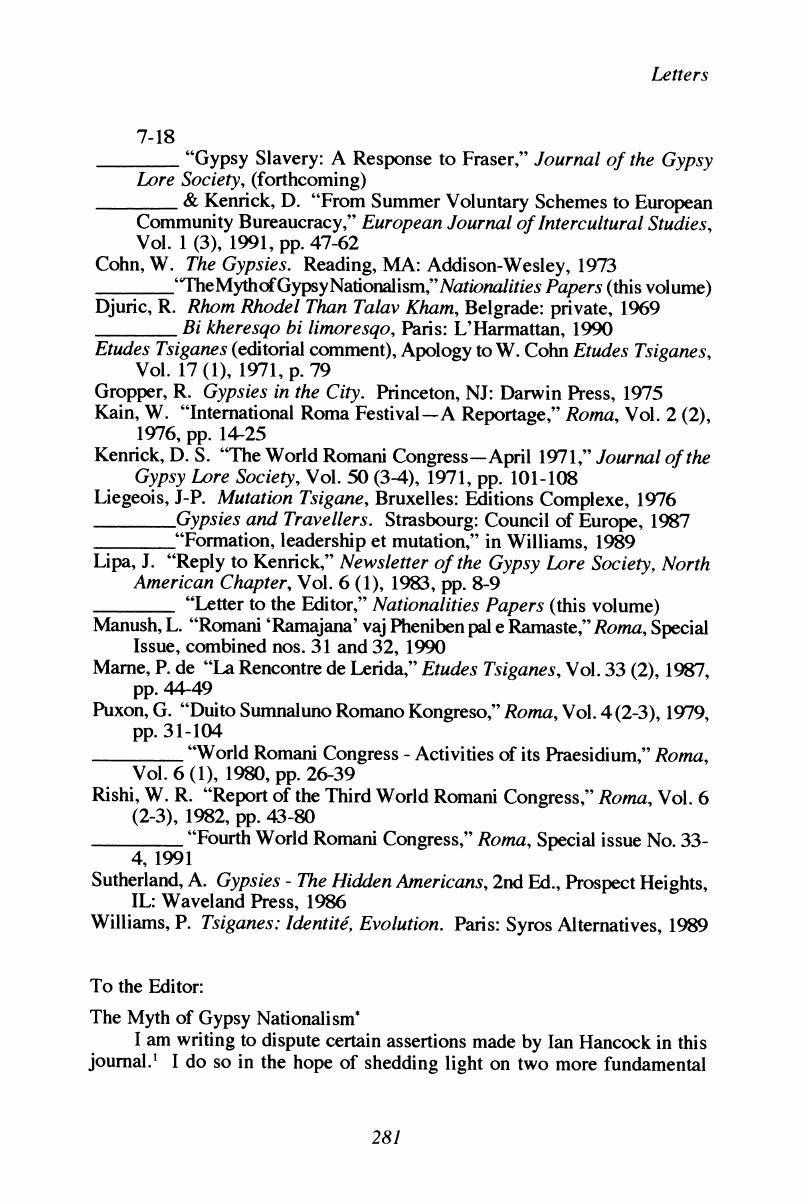Published online by Cambridge University Press: 20 November 2018

1. Hancock, Ian, “The East European Roots of Romani Nationalism” Nationalities Papers, XIX (3), Fall lg91, pp. 251–268.CrossRefGoogle Scholar
2. There are two outstanding books about the Rom: Yoors, Jan, The Gypsies (New York, 1967), a memoir of the author's years with European Rom that constitutes a most satisfactory, brilliant ethnography; and Olof Gjerdman and Erik Ljungberg, The Language of the Swedish Coppersmith Gipsy Johan Dimitri Taikon (Uppsala, 1963), a thorough, scholarly account of Romanes. Any ethnographic work with the Rom would be unthinkable without the aid of these books. While those who cite these works, of course, do not by that act alone become scholarly observers of the Gypsies, those who fail to refer to these books can hardly be taken seriously. My own booklet on the subject is Werner Cohn, The Gypsies (Reading, Mass., 1973). I mention it here only because it documents many of the assertions I make in this communication.Google Scholar
3. Salo, Matt. T., “Gypsy Ethnicity: Implications of Native Categories and Interaction for Ethnic Classification,” Ethnicity, vol. 6 (1979), pp. 73–96.Google Scholar
4. Among the more famous Boasters are the Kwieks of prewar Poland. Hancock takes them at face value (pp. 259-30). Yoors, op. cit., pp. 114-16, tells us what the Rom thought of them.Google Scholar
5. I will mention only one which is among the most notorious and also, unfortunately, among the most influential: Jean-Paul Clébert, The Gypsies (London, 1963), first published in French in 1961.Google Scholar
6. For an insight into the Promoters, I refer the reader to the works by Acton, Kenrick and Puxon, all of which are cited by Hancock.Google Scholar